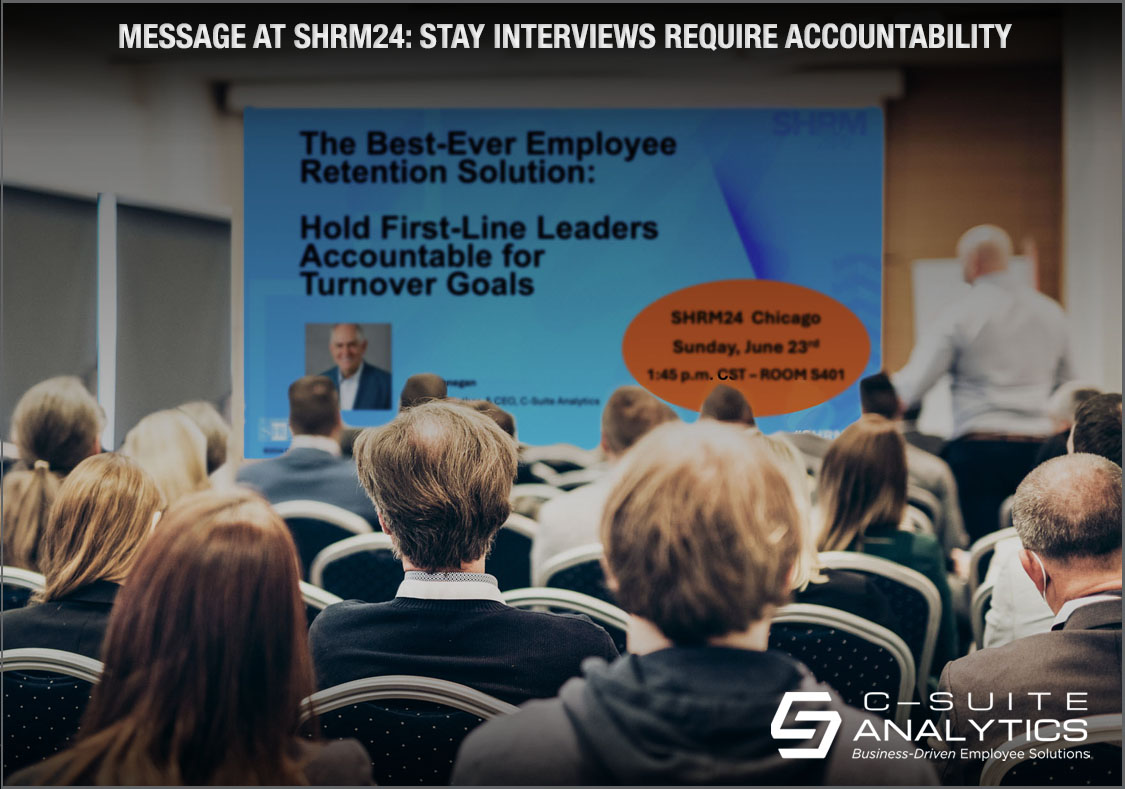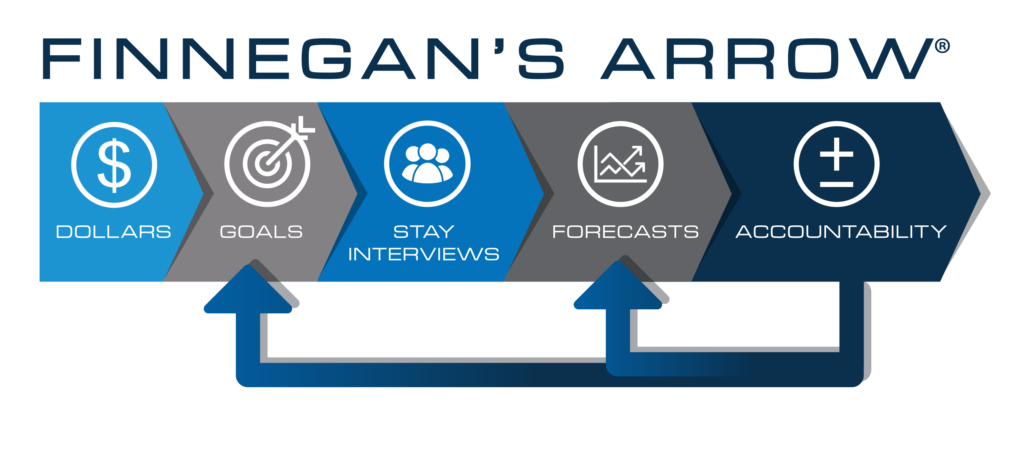Most hiring tools answer whether candidates can and will do the job, but not if they’ll stay. Learn how realistic job previews and motivational-fit interviews can improve retention from day one.
Message at SHRM24: Stay Interviews Require Accountability

This past Sunday I addressed the crowd at the SHRM24 Annual Conference in Chicago with my presentation, The Best-Ever Employee Retention Solution: Hold First-Line Leaders Accountable for Turnover Goals.
Questions on Stay Interviews from HR Professionals Attendees
Our client companies know the importance of retention accountability, and specifically that each first-line leader must be held accountable to two retention goals: one for all turnover and the second for new-hire turnover, measured based on the history of when new hires tend to leave.
Attending HR professionals who have associated me with only my Stay Interviews work or books reported that they had previously missed the key thing I described in the session’s title as “the best-ever employee retention solution”.
Why? Let’s start with these common phrases I hear all the time when meeting someone describing Stay Interviews:
- “We tried them once. HR did them I think”.
- “We already have too many meetings”.
- “Isn’t that like rounding? Our nurse managers try to do that every month”.
- “Our managers would never take the time…”.
- “We did them once, like focus groups”.
- “HR did them, did a report, nothing happened”.
- “We sort of do them already. We do a survey…”.
In other words, they see Stay Interviews as soft, as another HR intervention that goes awry for all of the reasons said above. And I agree…unless they apply Stay Interviews like we do, with strong accountability for first-line managers to achieve their employee retention goals.
——
Further reading: NBC News feature: Stay Interviews, Quest Diagnostics, and Dick Finnegan
——
Ask Yourself these Three Questions on Employee Retention
I began the session by asking a 3-question quiz:
- Who is accountable for employee retention at your company?
- Do you know from memory which managers have the highest turnover?
- Have any of your managers been fired because of high turnover?
The strongest answer to #1 was “all of the above”, which in reality means noboby. Most said “yes” to #2, and as nearly all said “no” to #3…as we would all likely predict.
But I went on report on just some of the research which all points in the same direction regarding why employees quit their jobs:
- “If you have a turnover problem, look first to your managers” … Gallup
- Employees stay for managers first and co-workers second … salary.com
- “When employees stay, it is because of their immediate managers” …National Education Association
- “22 of the top 25 most effective levers of employees’ intentions to stay were driven by their managers” …Corporate Leadership Council
- Onsite childcare and flexible scheduling cut turnover 0% whereas holding nurse managers accountable to retention goals cut turnover by 41% …Healthcare Advisory Board
- “Make supervisors accountable for retention” …monster.com
- “Poor leadership causes over 60% of employee turnover” …Saratoga Institute
- “70% looking for new jobs, primarily because of disliking the way their managers performed their jobs” …Yahoo
——
Further reading: The Room-Silencing Question at SHRM Talent 24 Las Vegas
——
Great Information…But HOW Do You Actually Improve Employee Retention?
Imagine cutting your turnover by 43%, 49%, or 58%…and the impact this would have on reducing open positions, improving engagement/productivity/profitability, and obviously reducing employee turnover. Our most recent three clients achieved these turnover reductions by implementing sound solutions…and “sound” in this case means business-driven…by applying the principals of Finnegan’s Arrow in their organizations.

We think of Finnegan’s Arrow as three distinct parts:
- For Dollars and Goals: Meet with the executive team first, armed with data regarding turnover’s cost as well as the best available sort of our client’s turnover data…and combine the two to recommend goals for all turnover and for new-hire retention.
- For Stay Interviews and Forecasting: Then the designated client Retention Champion reports that same cost-&-goal information to their managers, just prior to training those managers to facilitate Stay Interviews with each member of their teams, followed by their forecasting how long each employee will stay.
- For Accountability: Then we turn to the final Arrow component which is Accountability, such that we can now track each manager’s performance against their turnover goals and also their accuracy of forecasts based on their employees who leave.
Which component of Finnegan’s Arrow® matters most? Stay Interviews put HR in the driver’s seat by addressing each employee’s needs as individuals, as people, and as people who need to trust their direct supervisors. Building trust with employees and having managers, not HR, accountable for their people directly affects productivity and the bottom line, something your CEOs and leaders will respond to.
While Stay Interviews are powerful relationship-builders, without goals and forecasts they become another flavor of the month idea. Accountability for retention, engagement, and building the right, individualized stay plans so employees feel valued, recognized, appreciated…and accommodated, when possible, must be built in. Because nothing drives turnover down more than each manager being held accountable for meeting their retention goals.



